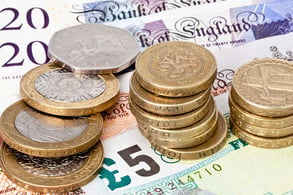The number of Isle of Man taxpayers has seen a consistent rise in numbers during each of the last five complete tax years.
Treasury Minister Dr Alex Allinson provided the figures in response to a written question from MHK for Douglas North, David Ashford.
Between the 2017/18 and 2021/22 tax years, the number of individual island taxpayers has increased year on year.
In 2017/18, the number of individually assessed taxpayers in the tax year was 42,604, a figure which steadily rose to 45,022 by 2021/22 (the last complete tax year).
Additionally, the number of those paying tax on incomes between £50,000 and £100,000 also increased from a total of 2,485 in 2017/18 to 3,515 in 2021/22. This again increased year after year.
Those paying tax on an income of over £100,000 was 844 in 2017/18, 884 in 2018/19, 884 in 2019/20, 882 in 2020/21 and then a substantial rise to 942 in 2021/22.
Alternatively, the number of jointly assessed couples paying tax on the island has decreased over the last five complete tax years.
In 2017/18, there was 14,223 compared to 13,552 in 2021/22 - a decrease of 671 over the five years.
However, those couples paying tax who earned between £100,000 and £200,000 increased from 1,366 to 1,633 over the five years.
The question was raised by Mr Ashford following the announcement in February that the higher rate of personal income tax is set to rise by 2% - from 20% to 22% - in April as part of the annual budget.
This is a move that critics have said will ‘pile further financial pressure on working families’.
Concerns have also recently been raised in the House of Keys regarding the island’s ‘tax cap’ system.
MHK for Douglas East, Joney Faragher, quizzed Dr Allinson whether the island’s new budget had been ‘framed’ to favour higher earners given that they wouldn’t be hit by tax rises under the system.
Treasury Minister Dr Alex Allinson replied: ‘The reason to set it to five or ten years is to lock people into their commitment to pay the £200,000. Previous to that, people could opt in certain years to use the system, particularly those who got intermittent dividends from large companies.
‘I think this is a much fairer way in terms of providing that stability, both for the individuals involved and also in terms of government revenue.’
Mr Ashford enquired about the number of those who have used the tax cap between the tax years 2017/18 and 2023/24 in another written question.
The highest number of tax cap elections was 73 in 2018/19, while the lowest was 54 in 2022/23. The most recent year, 2023/24, saw a total of 58 elections for the £200,000 tax cap.

.jpeg?width=209&height=140&crop=209:145,smart&quality=75)



Comments
This article has no comments yet. Be the first to leave a comment.